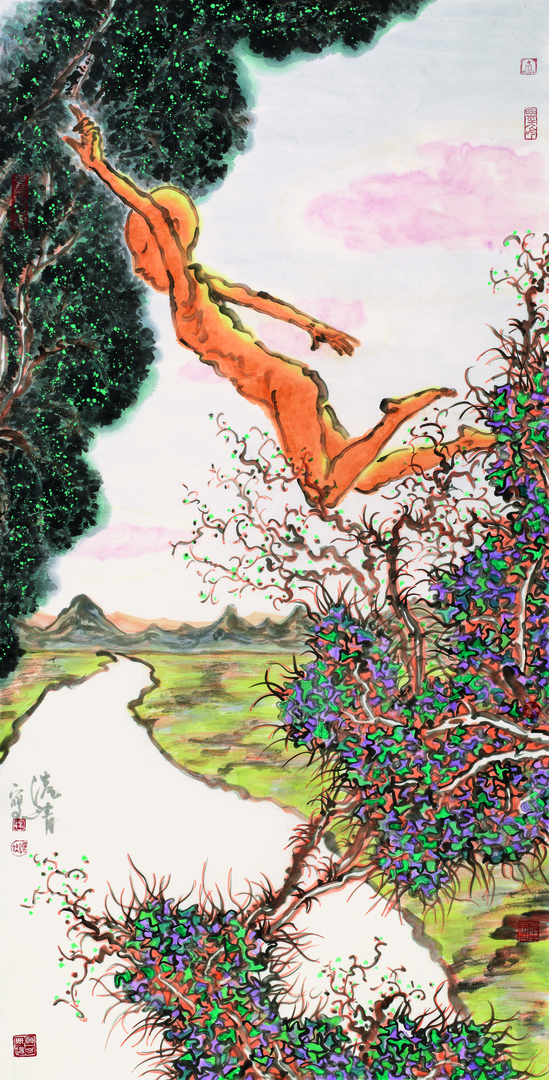
Wang, Gang Qing
WANG Gangqing was born in Beijing in August 1962. He
studied in the Department of Fine Arts of Beijing Normal
(Teachers) College from 1982-1986 and stayed on as a
member of faculty after obtaining his Bachelors Degree
there. He went for further studies in 1987 in the Kayama
Matazo (加山又造) Class of China Central Academy of Fine
Arts (CAFA). He took advanced academic studies in the
Chinese Arts Department of CAFA from 1989 to 1990. He
pursued additional studies in the Murals Department of
CAFA from 1997 to 1999 and obtained his Masters Degree
there.
His works were displayed at the 8 th , 9 th , 10 th , and 11 th China
National Fine Arts Exhibitions; the 1 st , 2 nd , 3 rd , 6 th , and 8 th
China Gongbi (Fine Brushwork) Paintings Display; China
Today Fine Arts Display; as well as at multiple national and
local academic arts events and gained numerous honors. His
works were published in various fine arts journals including
<Fine Arts Studies>, <Fine Arts>, <Fine Arts Observers>, and
<Fine Arts World> etc. and has published six personal art
albums. His large-scale mural entitled <Tech Starry Sky> is
now installed at the Beijing Fengtai Kejiyuan Station of
Beijing Metro Line No. 9.
Wang is currently a professor of Fine Arts College of Capital
Normal (Teachers) University as the Dean of Chinese
Paintings Department. Concurrently he holds the following
titles and memberships: academician of China Central
Democracy-Building Union’s Arts Academy; member artist
of Beijing Municipal People’s Political Consultative
Conference Calligraphy & Arts Academy; member of China
Fine Artists Association; council member of Beijing
Municipal Fine Artists Association; council member of China
Gongbi (Traditional Fine Brushwork) Paintings Society;
standing council member and deputy office head of China
Murals Society; member of China Architecture Society as
deputy director of murals committee; council member of
Beijing Gongbi (Fine Brushwork) & Zhongcai (Heavy Color)
Paintings Society; standing council member and deputy
office head of Beijing Qi Baisdhi Fine Arts Studies Society.
Artistic Style of his <Youth-Water> Series
Wang’s unique personal style is beginning to emerge in his
works: maturing children’s physiques with blurred facial
figures, often against a soft and slightly melancholy
background as his symbolic expression and visual symbol.
Here in this series, the artist chooses not to tell exciting
stories or ideas, nor does he resort to literature-style
rhetoric. Center at stage are youths in bare bodies, lying, or
sitting on slopes, or standing in shallow water, searching,
listening, or simply identifying. The naturalistic care-free
state of being appeals to the spectator’s heart and tends to
make the beholder oblivious of the mundane world’s daily
affairs. This kind of ease and relaxing setting stands not only
for a pleasant soul, but more for a liberated state of being,
which can represent a wishful thinking for life and
meanwhile as an understated language for experiencing
human existence.



